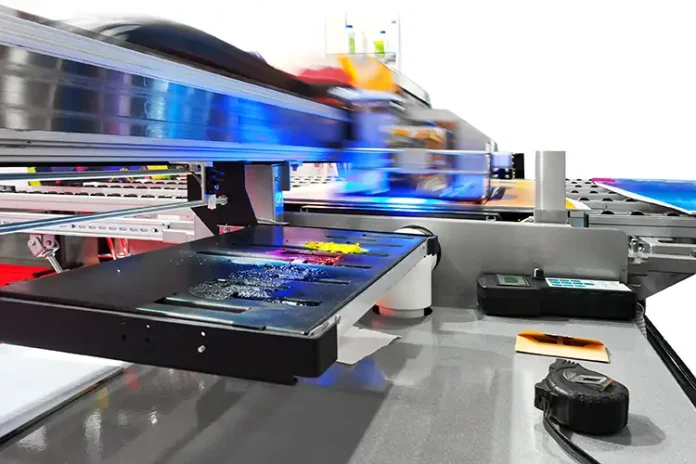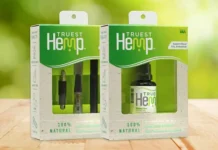By Cara Bommarito, sustainability manager, RadTech – UV+EB Technology Nonprofit Association
The ABCs are the building blocks of literacy. They are the most elementary principles to understanding language. Once readers have learned this concept, they gradually move on to reading, writing and grammar. This is an ever-evolving process, which continues to deepen over time. With practices and dedication, humans can take the ABCs and read 1,000-page novels or, better yet, write one of their own. The idea of ABCs also can be an analogy into sustainability.
Most people know the ABCs of sustainability as the 3Ps – or the triple bottom line. There are many variations on this, but the message is people, planet, profit. The concept is more complex and has varying approaches. It is user specific, unlike the ABCs, where A only can mean A sounds. The ABCs of sustainability can be interpreted in vastly different ways. This means sustainability can look different depending on the industry or even the person.
What are the ABCs of sustainability in the energy-curable industry? The best place to find this answer is through RadTech – a nonprofit trade association dedicated to the advancement of the energy-curable industry, which dedicates time and resources to authentically understand which sustainability principles to prioritize. For those who are unfamiliar, UV/EB and LED curing is a means for coatings, inks, adhesives, composites and other materials to be cured (dried). A wide range of industries use energy-curable technologies, including printing and packaging, aerospace and defense, automotive, collision repair and refinish, composites, electronics, metal finishing, medical devices, plastics, wood finishing, building products and 3D printing/additive manufacturing. With such a variety of industries, it is important that RadTech’s sustainability ABCs align with the industry and end users. The ABCs of sustainability for the energy-curable industry are: A – energy conservation, B – reducing greenhouse gas (GHG) emissions and C – encouraging a circular economy. UV/EB and LED have additional sustainability benefits, but this article only will focus on the above three as the foundation. While these sustainability items are the focus in the energy-curable industry, the technology also is a solution energy-curable technology creates for its users. It is an interesting paradigm. It is not only the goals, but also the solutions in at least two of the categories.
A – Energy conservation
The A of the ABCs is energy conservation. At the moment, there is a global energy crisis, particularly in Europe. Energy costs are soaring, and energy no longer is affordable and reliable. Now, more than ever, it is important to find innovative solutions to help conserve energy. How does UV/EB and LED help conserve energy? Almost all conventional methods where an oven is required for curing use about 50% more energy than energy-curable processes. Energy-curable technology eliminates the oven and replaces it with a curing lamp, which draws less energy. A real-world example can be found in the textile industry. When using UV, up to 75% of energy can be saved in comparison to classic thermal drying. UV curing is applied at room temperature, so thermal-sensitive materials can be used.1 Energy reduction can be found across all industries, which have chosen to implement energy-curable processes into production facilities. It is an important solution that has potential for even more energy savings. This is why it is the first letter in the sustainability priorities.
B – Reducing greenhouse gases
Next is B, reducing greenhouse gases and other harmful emissions. GHGs are attributed to climate change, making this is a global problem. Energy-curable technology can help reduce the GHG emissions in some industries. One example of the savings that already have been achieved using the technology is a major industry study of a UV can-coating process line, which found an over 65% reduction in GHG emissions. The study compared UV curing to a water-borne coating line equipped with incineration. There also was a documented 80% reduction in the total amount of energy used by the facility’s UV can coating process, compared to a conventional thermal system.2 Another important factor to consider is the vast reduction in volatile organic compounds (VOC) using energy-curable technology. Instead of using large-molecule polymers, UV/EB and LED use short-chain oligomers. This contributes to the overall curing effects that generate almost 100% solids and low or no VOCs. In many cases, energy-curable technology meets or exceeds the most stringent air quality standards. Air quality and reduction in GHGs are vital to sustainability. The UN sustainable development goals (SDG) list air quality as the following: SDG target 11.6.2, which aims to reduce the environmental impact of cities by improving air quality. The reduction of GHGs is of global importance and therefore is one of the foundations of the sustainable ABCs.
C – Circulatory
The final letter is C for circulatory, which coincidently starts with C. Circulatory is an important building block of sustainability. As defined in article written by Anne Velenturf, fellow in circular economy at the University of Leeds, “A sustainable circular economy involves designing and promoting products that last and that can be reused, repaired and remanufactured. This retains the functional value of products, rather than just recovering the energy or materials they contain and continuously making products anew.”3 The RadTech sustainability committee recently drafted three studies in circularity: two in recyclability and one in compostability. The goal of these studies is to understand whether UV-, EB- and LED-technology inks and adhesives have any effect on the recyclability or compostability of products that use energy-curable technology. It is important to the committee to be authentic in its findings and be forward thinking to ensure energy-curable technology does not negatively impact circularity. The results are not yet published on these studies and should be available in the early part of 2023. This is an important step to understanding energy-curable technology and its impact on circularity and sustainability.
Sustainability is about continuous improvement. The sustainability ABCs of energy-curable technology are impactful and, most importantly, quantifiable. They can be proved and measured so the industry confidently can back up the claims around sustainability. With the ABCs of sustainability, the industry hopefully can take these building blocks and expand further into other important sustainability issues and take the best practices to understanding the fundamentals in sustainability as they pertain to the energy-curable industry.
Cara Bommarito is the sustainability manager at RadTech. RadTech, located in Chevy Chase, Maryland, is a nonprofit serving the UV and EB industry and market. Learn more at www.radtech.org.
References
- https://www.textiletechnology.net/technology/trendreports/STFI%20UV-LED%20curing%20%E2%80%93%20eco-friendly%20and%20energy-saving%20technology%20for%20textile%20industry-30338
- https://radtech.org/wp-content/uploads/2020/11/UVEBTechnologyAWaytoReduceGHGs.pdf
- https://theconversation.com/what-a-sustainable-circular-economy-would-look-like-133808#:~:text=A%20sustainable%20circular%20economy%20involves,and%20continuously%20making%20products%20anew.





